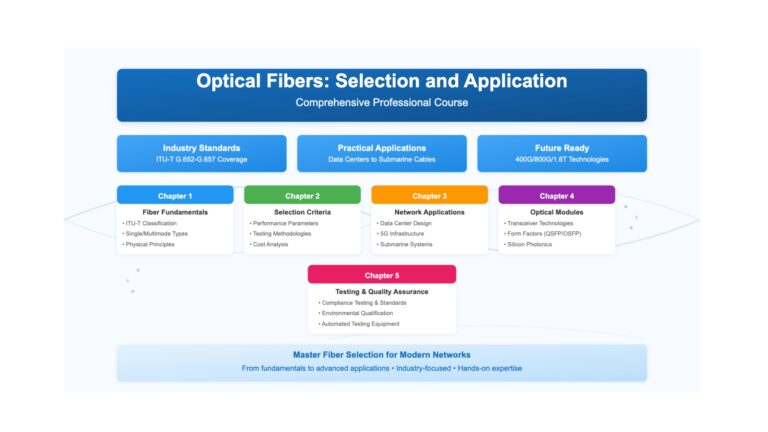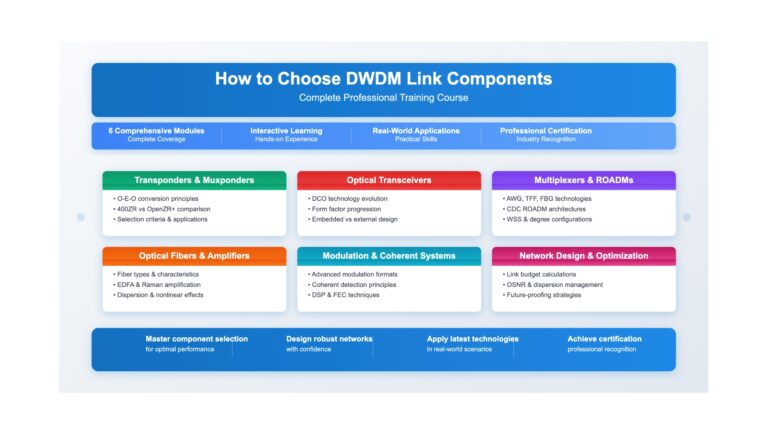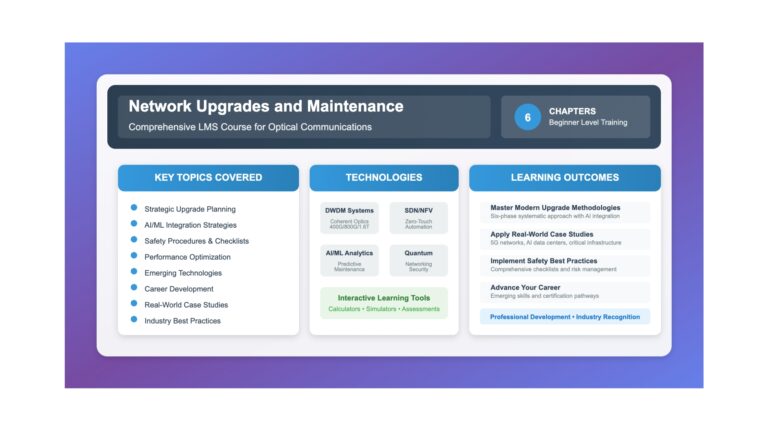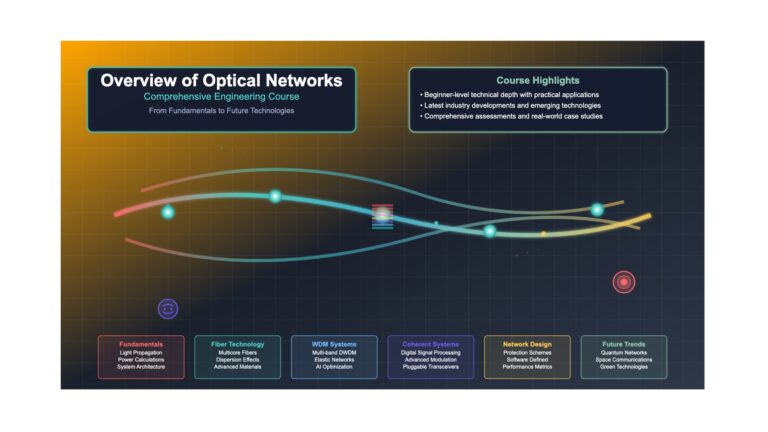Description
Curriculum
Instructor
Learning Objectives
- Understand the fundamental principles of direct-detection optical communication systems
- Compare direct-detection systems with coherent detection systems
- Identify key applications and advantages of direct-detection technology
- Analyze the basic architecture of intensity-modulation direct-detection (IM-DD) systems
- Evaluate the role of direct-detection systems in modern optical networks
Curriculum
- 6 Sections
- 51 Lessons
- 10 Weeks
Expand all sectionsCollapse all sections
- Chapter 1 Introduction to Direct-Detection Systems9
- 1.11.1 What is Direct Detection?
- 1.21.2 Historical Context and Evolution
- 1.31.3 System Architecture and Components
- 1.41.4 Comparison with Coherent Systems
- 1.51.5 Key Applications and Market Drivers
- 1.61.6 Current Challenges and Opportunities
- 1.7Knowledge Check Questions
- 1.8Chapter Summary
- 1.9References and Further Reading
- Chapter 2 Conventional Direct-Detection Principles8
- Chapter 3 System Limitations and Challenges9
- Chapter 4 Advanced Self-Coherent Systems9
- 4.14.1 Introduction to Self-Coherent Detection
- 4.24.2 Field Detection Mathematics
- 4.34.3 Single-Sideband Signal Generation
- 4.44.4 Single-Signal Beating Interference (SSBI)
- 4.54.5 SSBI Mitigation Techniques
- 4.64.6 System Performance and Optimization
- 4.7Knowledge Check Questions
- 4.8Chapter Summary
- 4.9References and Further Reading
- Chapter 5 Kramers-Kronig Receivers8
- Chapter 6 Future Directions and Applications8
- 6.16.1 Stokes Vector Receivers and Polarization Multiplexing
- 6.26.2 Competitive Analysis: Direct Detection vs. Coherent Systems
- 6.36.3 Photonic Integration and System-on-Chip
- 6.46.4 Emerging Applications and Market Opportunities
- 6.56.5 Technology Roadmap and Research Directions
- 6.6Knowledge Check Questions
- 6.7Chapter Summary
- 6.8References and Further Reading
Admin

21 Students36 Courses

Free
1 student
51 lessons
Language: English
0 quiz
Assessments: Yes
Skill level All levels
Courses you might be interested in
Fiber Optics & Components
Learning Objectives Understand the fundamental principles of optical fiber communication and light propagation Classify different types of optical fibers based on ITU-T standards and industry specifications Analyze the key physical...
-
41 Lessons
Free
DWDM Technology
Learning Objectives Understand the fundamental principles of Dense Wavelength Division Multiplexing (DWDM) Analyze the role and functionality of transponders in DWDM networks Compare different transponder types and their applications Evaluate...
-
49 Lessons
Free
Network Automation
Learning Objectives Understand the fundamental principles and drivers of network upgrades in modern optical communications Analyze capacity requirements, technology advancements, and cost-benefit considerations for upgrade decisions Evaluate compatibility, interoperability, and...
-
47 Lessons
Free
DWDM Technology
Learning Objectives Understand the fundamental principles of optical communication and light propagation Analyze the electromagnetic spectrum and optical window characteristics for fiber transmission Compare optical communication advantages over traditional electrical...
-
61 Lessons
Free





